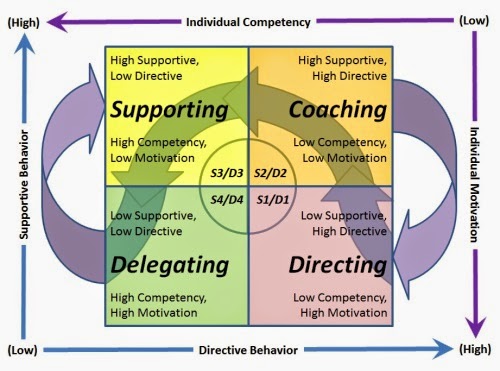Introduction
From this assignment, we will use a letter of complaint for the staff promotion selection process to illustrate the conflict between employer and employee, and recommend how to resolve the conflict.
Background story
ABC Company is an old style trading company. The organization structure is well
hierarchy-based. Besides the management board, General Manager (GM) is the top management of daily operation. He is handling all divisions including Marketing & Sales Department, Accounting Department, Personnel Department and Supply Department etc. All department heads are responsible to GM separately.
In each department, there is a manager who is leading a team of 8-10 junior staff except Marketing & Sales Department. In this department, there is a Senior Manager (SM) leading TWO independent sales teams (Team A & Team B). Each of them is composed of 10 salespersons and managed by a sales manager. Now, Tom & Barry are the sales manager of these teams and Gary is the SM of Marketing & Sales Department.
Gary will be retired in three months and the management board decide to start a
promotion exercise for taking up the duty of Gary as a
SM of Marketing & Sales Department. GM is the in-charge person of this promotion exercise with the assistance of Personnel Department. GM setup a promotion committee for this promotion exercise and it is composed for GM, Manager of Personnel Department and one member from the management board. The GM is decided to use an
interview to seek the right person and all members in the promotion committee is responsible to sit in the interview process.
Once the post of SM is posted, both Tom & Barry think himself is the right person. It is true that both of them fulfil the basic requirement of this post. However, in the mind of Tom, he is greater chance than Barry because:-
1) His working
experience is
longer (10yrs to 6yrs);
2) His education level is higher (
Master Degree than Bachelor Degree);
3) The
sales performance of his team is
outstanding.
So, Tom was
full of confidence at the beginning. However, Tom
failed finally. Barry got the post. Tom was very
depressed and
dispirited. He even guess it is the result of GM dislike him. One week after announcement of the post, Tom send a complaint letter to the management board for the reason of his failure.
Complaint Letter
Dear Sir / Madam,
I am Tom, manager of Sales Team A. I worked for ABC Company since 2005. I am pleased to work at our company as it give me energy and vision for future. I hope I would not leave this company until my retirement.
In the promotion exercise last week, I doubt about the decision of the committee. I admit that Barry is also suitable for the post of Senior Manager but I do think I am better than Barry actually. Generally speaking, I have more working experience than Barry and I got a master degree while Barry is just a bachelor degree holder. Also, the sales performance of Team A under my leadership is outstanding and it was proven by the annual report. I do think I am the right person on the post of Senior Manager.
I do wonder the criteria for the promotion committee in selecting the right person. Is it just based on the performance of the interview? It’s very inconceivable. All objective factors such as working experience, education background or sales performance etc. would not be considered but just an interview. How ridiculous it is! For me, it is very unfair.
I know that it is impossible to change this result. However, I do hope the management would give me a detailed explanation on the selection process and how this decision was made by the committee. Besides, I do suggest the company should look broader in the promotion exercise. This exercise is just a black box with nobody know the criteria.
If I cannot get a satisfied response, I will seek help from the Labor Department of Hong Kong and publish it to mass media as I got an unfair treatment by our company.
Finally, I really want to say that I love my company and I respect my job. I work hard every day but just get an unfair treatment on promotion exercise. I am very disappointing for this decision.
Best Regards,
Tom
Analysis
1. Understanding of the ladder of inference
The Ladder of Inference, initially developed by organizational psychologist Chris Argyris and applied by Peter Senge in The Fifth Discipline: The Art and Practice of the Learning Organization.

This tool teaches us that we shall begin with the reality and experience, can be recorded by video, camera, tape record etc. Then we choose the selected data and pay attention to them. Give meaning, understanding to the selected data, we try to interpret the selected reality, develop assumption, get conclusion, and form beliefs, and affect the actions deeply.
The new actions form the new reality and facts.
And beliefs influence what data and reality we will select. If we directly use our narrow selection of experience and data, it will become a vicious circle, come to bias conclusion etc.
2. Analysis from Victims
At first Tom the victim was confident of him (Assumption, Conclusion, Belief) because his longer working experience, higher educational level, better sales performance (he selected these data as standard), but interview result is that he failed. He totally frustrated and couldn’t understand why it happened like this. He felt deeply hurt by the interviewing.
After first action of interviewing failed, he jumped the ladder of inference, upon fixed belief (3 standards of the promotion: working experience, educational level, performance), he selected data, the interview failing is due to GM dislike of him. He totally felt unfair. And took action quickly after promotion result announcement, Tom sent complaint letter to the management board.
3. Analysis from Offenders
There are two possible views from the management board.
Facts Possible One:
Just like Tom assumed, the general manager really dislike him because he never proactively communicate with the general manager, and always be proud of his high education level and total performance.
While Barry, though he is younger, less working experience, but he’s already enough for the senior position, and he always proactively think for general manager, though his total sales performance result is lower than Tom, but profits is valuable, and get better feedback from client.
Facts Possible Two:
Except the interview, considering working experience, educational level, performance, this company also applied 360-degree feedback for Tom and Barry from their peers, subordinates, suppliers, buyers etc. Barry got better feedback than Tom.

Considering the interview result, 360 degree feedback, enough qualification of working experience, education, performance sales skills (Select enough data), company interpret the position, assumed Barry is better than Tom, and choose Barry finally.
4. Complaint Letter
Complaint letter functions:
1. When writing complaint letter, you need to recall the facts what just happened, and need to collect the proof if possible, like Tom has longer working experience which showed in contract, higher educational level like certification of university, and performance like sales contracts. It helps we rethink the past experience more calmly and logically.
2. Of course, it avoids direct emotional and harmful behaviour, which may hurt himself or others.
3. Give others more time and space to double think. Show enough respect to others. Still looking for benefits for himself and others.
Inferior of the compliant letter:
Due to past-formed belief, the complaint letter is influenced by the belief. Like Tom, when he writing the complaint letter, he still focused on the three criteria of promotion, ignored all other realities.
Belief influence selected data again:
Due to different belief and value, victims or offenders will directly select the data in accordance with their belief.
Like Tom he believed promotion standards shall be mainly experience, education, performance, ignore other feedback of himself.
5. Learning from this case
1. No matter victim or offenders shall try to collect more objective facts, and select them from different aspects or standards, then interpret them objectively, will help us to get better assumption, conclusion, form right belief, and do the action rightly.
2. Do not use past experience to make next decision rudely. Double think more facts.
3. In order to maintain harmony atmosphere in an office, management need to consider the feeling of its staff. The situation will be much better if GM can personally talk and explain to Tom about his failure
before result announcement. Tom will feel more comfortable.
4. Staff need not to challenge the authority of his boss, otherwise, the relationship will be broken and it will be difficult to repair. In the case, GM may not dislike Tom actually. However, after Tom sending the complaint letter to management board, there must be a thorn in the heart of his boss.
Recommendations and Conclusion
To conclude for this conflict in promotion exercise, we have some recommendations to both Tom and the management.
1. Recommendation to Tom
We recommend Tom to seek advice from more sources, say from peers, subordinates from his team and Barry's team to make sure the situation is really unfair to him before sending the complaint letter. This will help to make an objective judgement. A formal complaint will damage his relationship with the management, which is not what he desire to have.
2. Recommendation to management
The promotion exercise aim at finding the right person for the position and to maintain or increase productivity. If the selection process is not handled properly, it will affect the morale of the unsuccessful applicants like Tom in this case, which is undesirable.
Before the promotion result announcement, we recommend management to
hold debriefing discussion with
every applicants to review the result of the selection process, to let the application know their
strength and weakness, and why they are not as
competent than the chosen candidate. Management should
set career goals and objectives for the unsuccessful applicants to proceed with their career with the company so that the applicants will feel the
care from the management and will be
happy to work for the company.
Reference
Argyris, C., 'Overcoming Organizational Defenses: Facilitating Organizational Learning,' 1st Edition, © 1990. Printed electronically and reproduced by permission of Pearson Education, Inc., Upper Saddle River, New Jersey. and Sons, Inc.



























